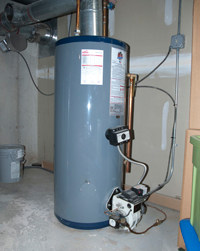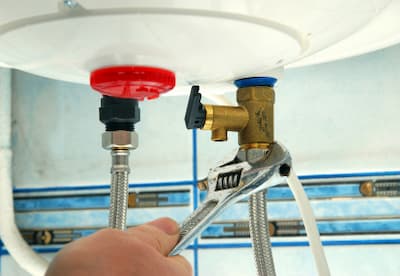What're your opinions about Tips on Maintaining a Water Heater?

Warm water is important for day-to-day comfort, whether it's for a revitalizing shower or washing meals. To guarantee your hot water system runs effectively and lasts much longer, regular maintenance is crucial. This article offers functional pointers and insights on exactly how to preserve your home's warm water system to avoid interruptions and pricey repairs.
Introduction
Preserving your home's warm water system could appear challenging, however with a couple of straightforward steps, you can ensure it operates smoothly for many years ahead. This overview covers whatever from understanding your hot water system to do it yourself upkeep suggestions and understanding when to call in expert aid.
Importance of Maintaining Your Warm Water System
Normal maintenance not only prolongs the life-span of your warm water system but also ensures it operates effectively. Disregarding maintenance can result in reduced performance, greater energy bills, and even premature failure of the system.
Indicators Your Warm Water System Requirements Upkeep
Recognizing when your warm water system needs attention can protect against major issues. Watch out for indications such as irregular water temperature level, weird noises from the heating unit, or rustic water.
Purging the Hot Water Heater
Purging your hot water heater gets rid of debris buildup, improving efficiency and prolonging its life.
Checking and Replacing Anode Rods
Anode rods prevent corrosion inside the tank. Examining and replacing them when worn is critical.
Complicated Issues Requiring Specialist Assistance
Examples include significant leakages, electric problems, or if your water heater is continually underperforming.
Regular Expert Maintenance Conveniences
Specialist maintenance can include detailed evaluations, tune-ups, and ensuring conformity with security standards.
Inspecting and Readjusting Temperature Settings
Readjusting the temperature settings makes certain ideal performance and safety and security.
DIY Tips for Maintenance
You can execute a number of maintenance jobs on your own to keep your hot water system in leading condition.
Looking for Leaks
Regularly evaluate pipes and links for leaks, as these can lead to water damages and higher expenses.
Understanding Your Warm Water System
Before diving right into maintenance jobs, it's useful to comprehend the basic parts of your hot water system. Commonly, this includes the hot water heater itself, pipes, anode poles, and temperature controls.
Month-to-month Maintenance Tasks
Routine monthly checks can assist catch small issues before they rise.
Evaluating Stress Relief Valves
Examining the pressure safety valve ensures it works appropriately and avoids too much pressure build-up.
Insulating Pipes
Shielding hot water pipelines reduces warm loss and can conserve energy.
When to Call an Expert
While do it yourself maintenance is helpful, some issues need specialist proficiency.
Final thought
Normal maintenance of your home's warm water system is crucial for efficiency, durability, and price savings. By complying with these pointers and knowing when to seek specialist aid, you can ensure a trustworthy supply of warm water without unexpected interruptions.
How to Maintain an Instant Hot Water Heater
Before tinkering with your hot water heater, make sure that it’s not powered on. You also have to turn off the main circuit breaker and shut off the main gas line to prevent accidents. Also turn off the water valves connected to your unit to prevent water from flowing into and out of the appliance. 2. When you’re done, you have to detach the purge valves’ caps. These look like the letter “T” and are situated on either side of the water valves. Doing so will release any pressure that has accumulated inside the valves while at the same time avoid hot water from shooting out and burning your skin. 3. When the purge valves’ caps are removed, you have to connect your hosing lines to the valves. Your unit should have come with three hoses but if it didn’t, you can purchase these things from any hardware or home repair shops. You can also get them from retail stores that sell water heating systems. Read the user’s manual and follow it to complete this task properly. When the hosing lines are connected, open the purge port’s valves. 4. You should never use harsh chemical cleaners or solutions when cleaning your unit. Make use of white vinegar instead. It should be undiluted and you’ll probably use about 2 gallons. 5. Now flush your water heater. This task should probably take about 40 minutes. We can’t give you specific directions for this because the procedure is carried out depending on the type, model and brand of your heater. With that being said, refer to the user’s manual. 6. When you’re done draining the unit, you have to turn off the purge port valves again. Remove the hosing lines that you earlier installed on each of the water valves. Put the valve caps (purge port) back in their respective places and be very careful so as not to damage the rubber discs that are found inside these caps. 7. Now that everything’s back in place, check your user’s manual again to find out how to reactivate your water heating system. 8. Once it is working, turn one of your hot water faucets on just to let air pass through the heater’s water supply pipes. Leave the tap on until water flows smoothly out of it. https://www.orrplumbing.com/blog/2014/september/how-to-maintain-an-instant-hot-water-heater/

As a keen reader about Tips For Maintaining Your Hot Water Heater, I think sharing that excerpt was important. Feel free to take the time to share this blog if you enjoyed it. Thanks so much for going through it.
Get A Free Estimate